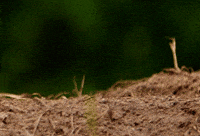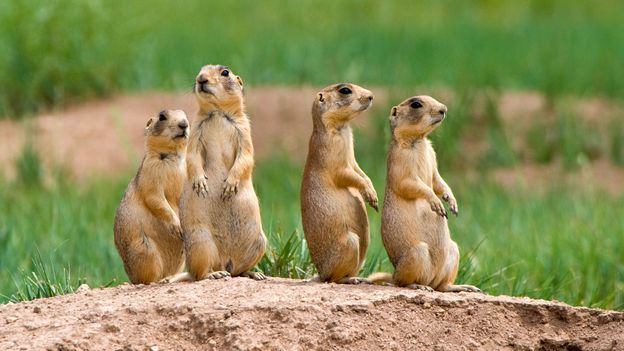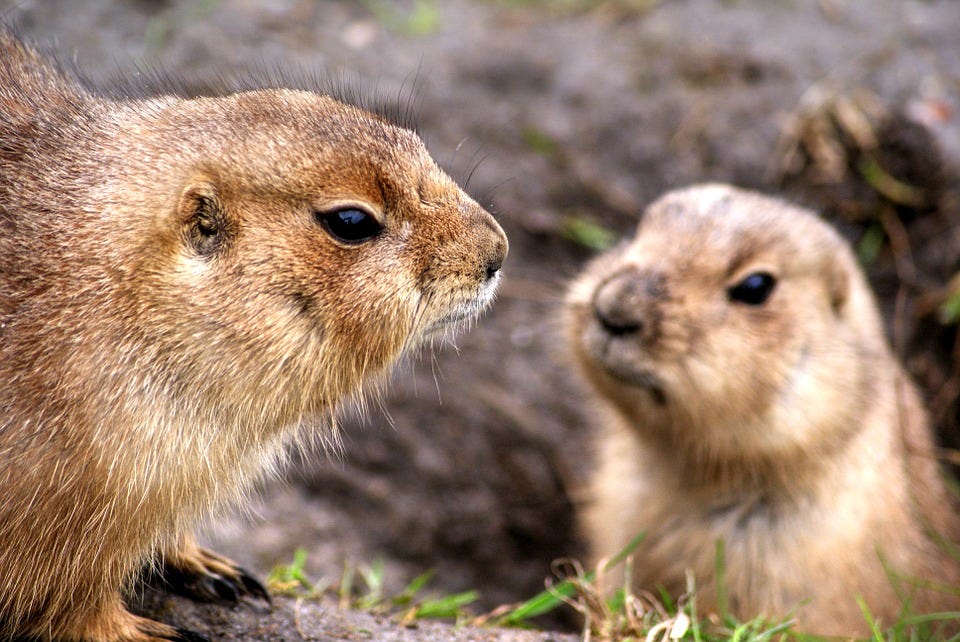Prairiedogese⭐️
Did you know how well they speak? 🗣
Prarie dogs, a species of rodent native to North
America, live together in little villages of underground burrows. They
are very social creatures, and when a predator enters their village —
most often a dog or a coyote or a hawk — they call out to warn their
neighbors. "It sounds kind of like
'chee chee chee chee,' "
says Slobodchikoff, a researcher on Prariedogese.
Slobodchikoff and his students went out into the prairie dog villages,
hid behind bushes, and stuck out their microphones whenever a human,
or a dog, or a coyote, or a hawk passed through. They recorded calls
that the prairie dogs made in response to different predators. Then he
took his recordings to a lab and used a computer program to analyze
the sounds.
What Slobodchikoff discovered was that the calls clustered into
different groups, and each cluster had its own signature set of
frequencies and tones.
Prairie dogs, in other words, don't just have a call for "danger" —
they have one
call
for "human," another for "hawk" and a third for "coyote." They can
even differentiate between coyotes and domesticated dogs.
During his analysis,
Slobodchikoff
noticed something: Even though the human call was consistently
different from the other calls, there was still significant variation
between the individual human calls. He began to wonder whether the
little rodents could possibly be describing their predators — not just
differentiating hawk from human, but actually saying something about
the particular human or coyote or hawk that was approaching.
So he devised a test. He had four (human) volunteers walk through a
prairie dog village, and he dressed all the humans exactly the same —
except for their shirts. Each volunteer walked through the community
four times: once in a blue shirt, once in a yellow, once in green and
once in gray.
He found, to his delight,
that the calls broke down into groups based on the color of the
volunteer's shirt.
"I was astounded," says Slobodchikoff. But what astounded him even
more, was that further analysis revealed that the calls also clustered
based on other characteristics, like the height of the human.
"Essentially they were saying, 'Here comes the tall human in the
blue,' versus, 'Here comes the short human in the yellow,' " says
Slobodchikoff.

,,ɟɟoʞᴉɥɔpoqolS,, ',,llɐɔ,, ',,ǝǝɥɔ ǝǝɥɔ ǝǝɥɔ ǝǝɥɔ,, 'ǝɹnʇɔᴉd pɹƐ 'ᴉɾoɯǝ ǝɔᴉoʌ :sɹǝʍsuɐ ǝƃuǝllɐɥɔ

